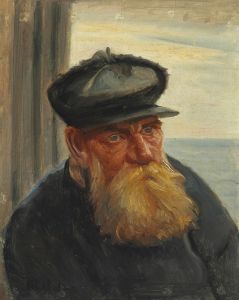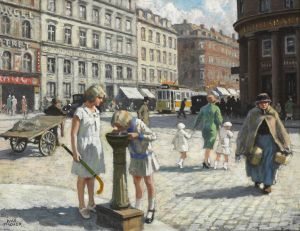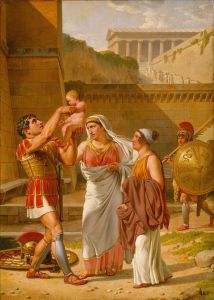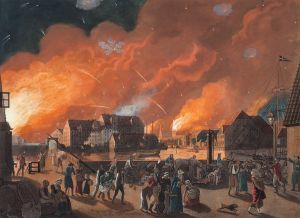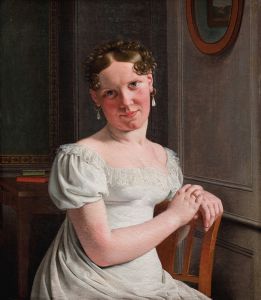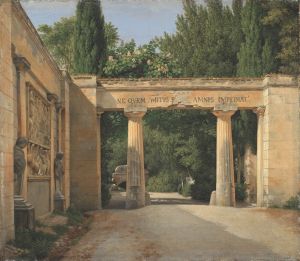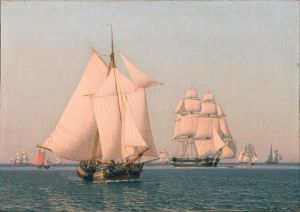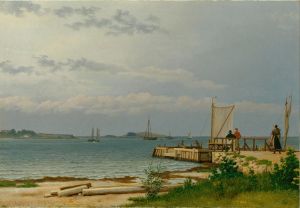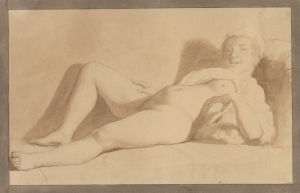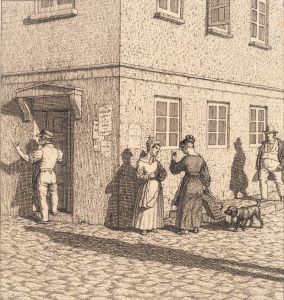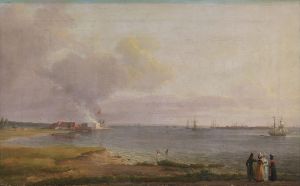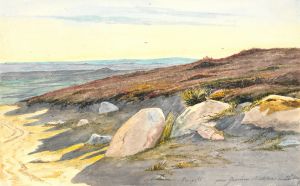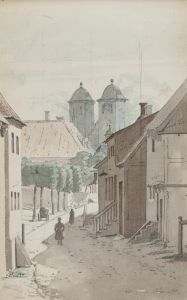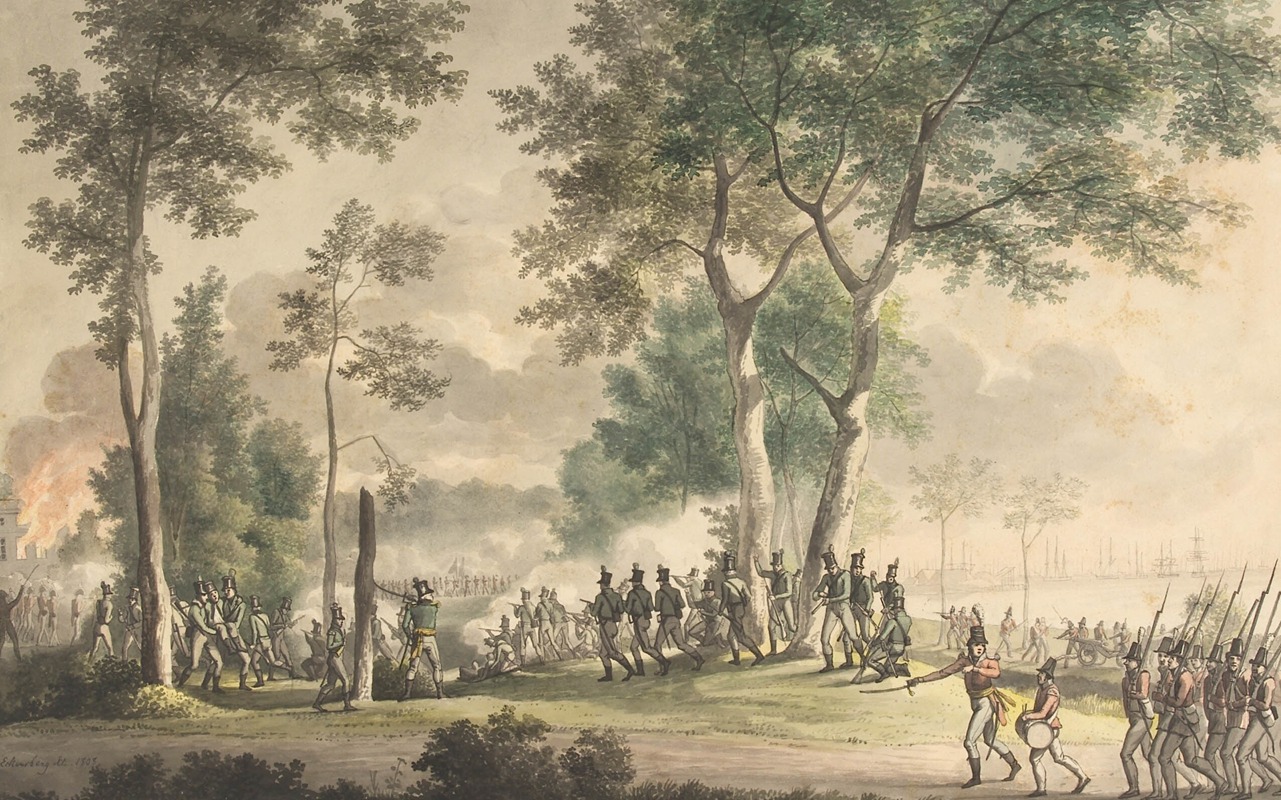
Livjægernes udfald i Classens have 31.august 1807.
A hand-painted replica of Christoffer Wilhelm Eckersberg’s masterpiece Livjægernes udfald i Classens have 31.august 1807., meticulously crafted by professional artists to capture the true essence of the original. Each piece is created with museum-quality canvas and rare mineral pigments, carefully painted by experienced artists with delicate brushstrokes and rich, layered colors to perfectly recreate the texture of the original artwork. Unlike machine-printed reproductions, this hand-painted version brings the painting to life, infused with the artist’s emotions and skill in every stroke. Whether for personal collection or home decoration, it instantly elevates the artistic atmosphere of any space.
Christoffer Wilhelm Eckersberg's painting Livjægernes udfald i Classens Have 31. august 1807 (The Attack of the Light Infantry in Classen's Garden, August 31, 1807) is a historical artwork that depicts a scene from the British bombardment of Copenhagen during the Napoleonic Wars. The painting portrays a specific event that occurred on August 31, 1807, when Danish light infantry, known as the "Livjægere" (Life Hunters), launched a counterattack against British forces in Classen's Garden, a location in Copenhagen.
The historical context of the painting is tied to the British campaign against Denmark in 1807. During this period, Britain sought to prevent Denmark's fleet from falling into the hands of Napoleon's forces. The British launched a preemptive strike, which included a naval blockade, land invasion, and the bombardment of Copenhagen. The conflict culminated in the surrender of the Danish fleet to the British, but not without significant resistance from the Danish military and civilian population.
Eckersberg's painting captures the bravery and determination of the Danish soldiers during this tumultuous time. The composition focuses on the chaotic and intense nature of the skirmish, with soldiers engaged in combat amidst the natural surroundings of the garden. The artist's attention to detail and use of light and shadow add a dramatic quality to the scene, emphasizing the gravity of the moment.
Christoffer Wilhelm Eckersberg (1783–1853) is often referred to as the "father of Danish painting" and is a central figure in the Golden Age of Danish art. Known for his precise and realistic style, Eckersberg was deeply influenced by his studies in Paris and Rome. His works often combine historical themes with meticulous attention to detail, as seen in this painting.
The painting is significant not only as a work of art but also as a historical document that reflects Denmark's resistance during a critical moment in its history. It serves as a reminder of the sacrifices made by the Danish people during the British attack on Copenhagen. Today, the painting is considered an important example of Eckersberg's contribution to Danish art and his ability to depict historical events with both accuracy and emotional depth.
Further details about the painting's current location or its creation process are not widely documented.





